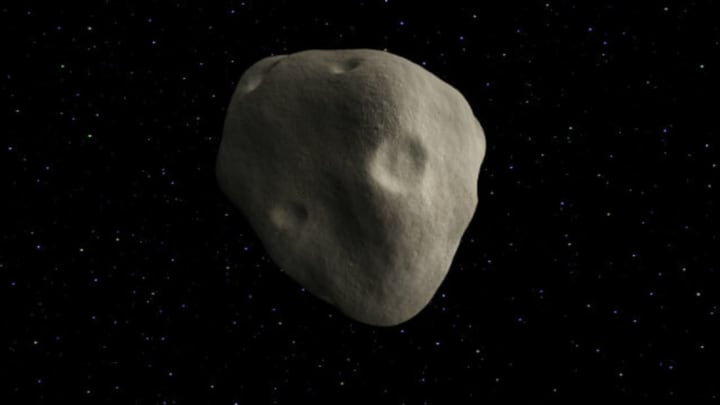Sixty-six million years ago, a giant asteroid slammed into Earth near what is now Mexico's Yucatan Peninsula. The collision created the famous Chicxulub crater, and likely killed off the dinosaurs and most of Earth’s life forms. However, researchers now say they’ve uncovered physical evidence of an even larger space rock that collided with early Earth 3.5 billion years ago, Live Science reports. Their research will be published in the journal Precambrian Research this July.
The asteroid is the second oldest known to hit the Earth, and one of the largest, scientists say. It’s estimated to have been about 12 to 19 miles across—meaning it likely dwarfed the later one that crashed into present-day Yucatan. Its impact probably devastated the planet.
"The impact would have triggered earthquakes orders of magnitude greater than terrestrial earthquakes; it would have caused huge tsunamis and would have made cliffs crumble," study co-author Andrew Glikson, a planetary scientist at the Australian National University, said in a statement.
Nobody knows quite where the asteroid struck, as any craters would have disappeared due to volcanic activity and tectonic movement. However, Glikson and his colleague, Arthur Hickman, were able to find remains of the asteroid by examining sea floor sediments dating back to roughly 3.5 billion years ago. The sediments were taken from samples drilled from an ancient rock formation in northwestern Australia called the Marble Bar. Preserved between layers of volcanic rock, it’s thought to be some of the oldest sediment in the world.
When the giant asteroid hit the Earth, the impact vaporized its rock. Little round glass particles called spherules were scattered across the globe. Glikson tested the beads he found in the core sample and discovered they contained the levels of elements like platinum, nickel, and chromium that are found in asteroids. He told CNN that he was able to estimate the asteroid's possible size by analyzing the size of the spherules.
While this particular asteroid would have wreaked havoc on early Earth, Glikson says it’s likely one of many to have struck the planet in its infancy.
"This is just the tip of the iceberg," Glikson said in a release. "We've only found evidence for 17 impacts older than 2.5 billion years, but there could have been hundreds. Asteroid strikes this big result in major tectonic shifts and extensive magma flows. They could have significantly affected the way the Earth evolved."
[h/t Live Science]
